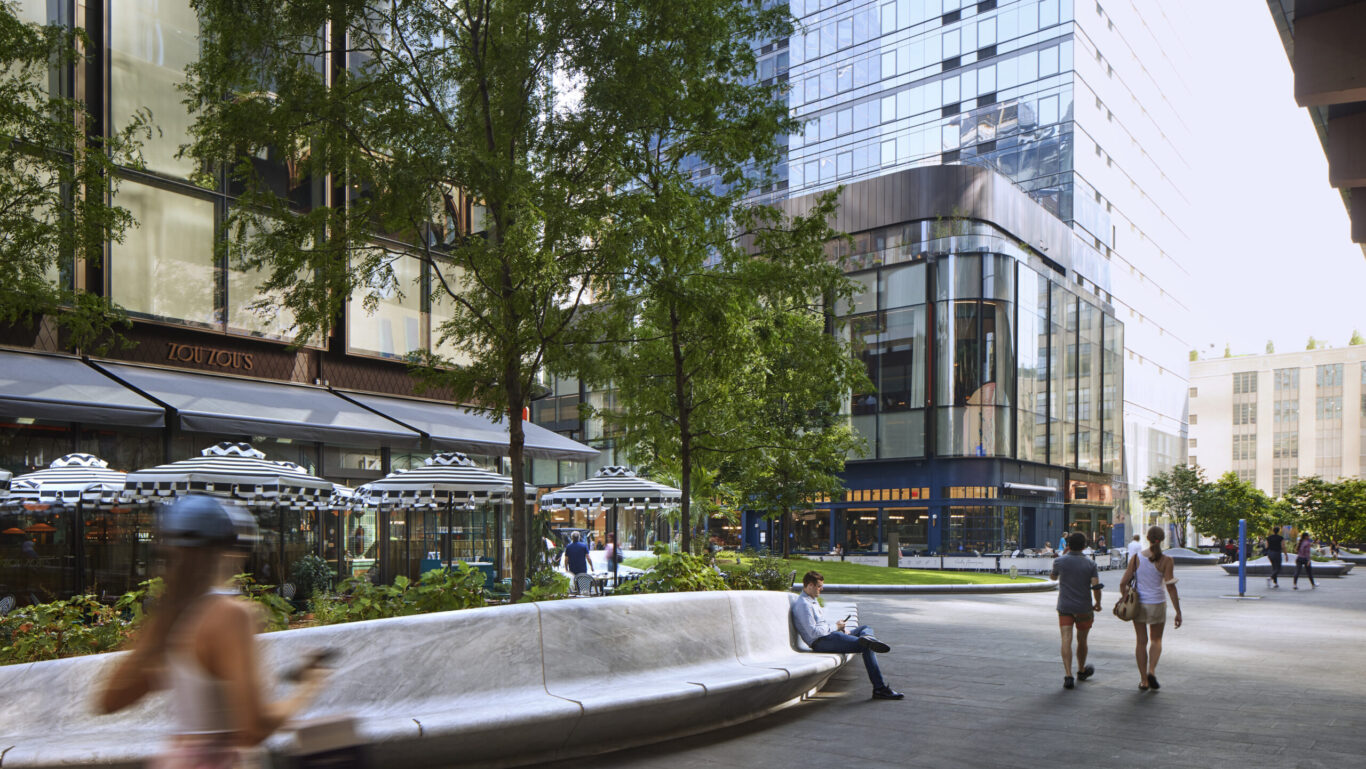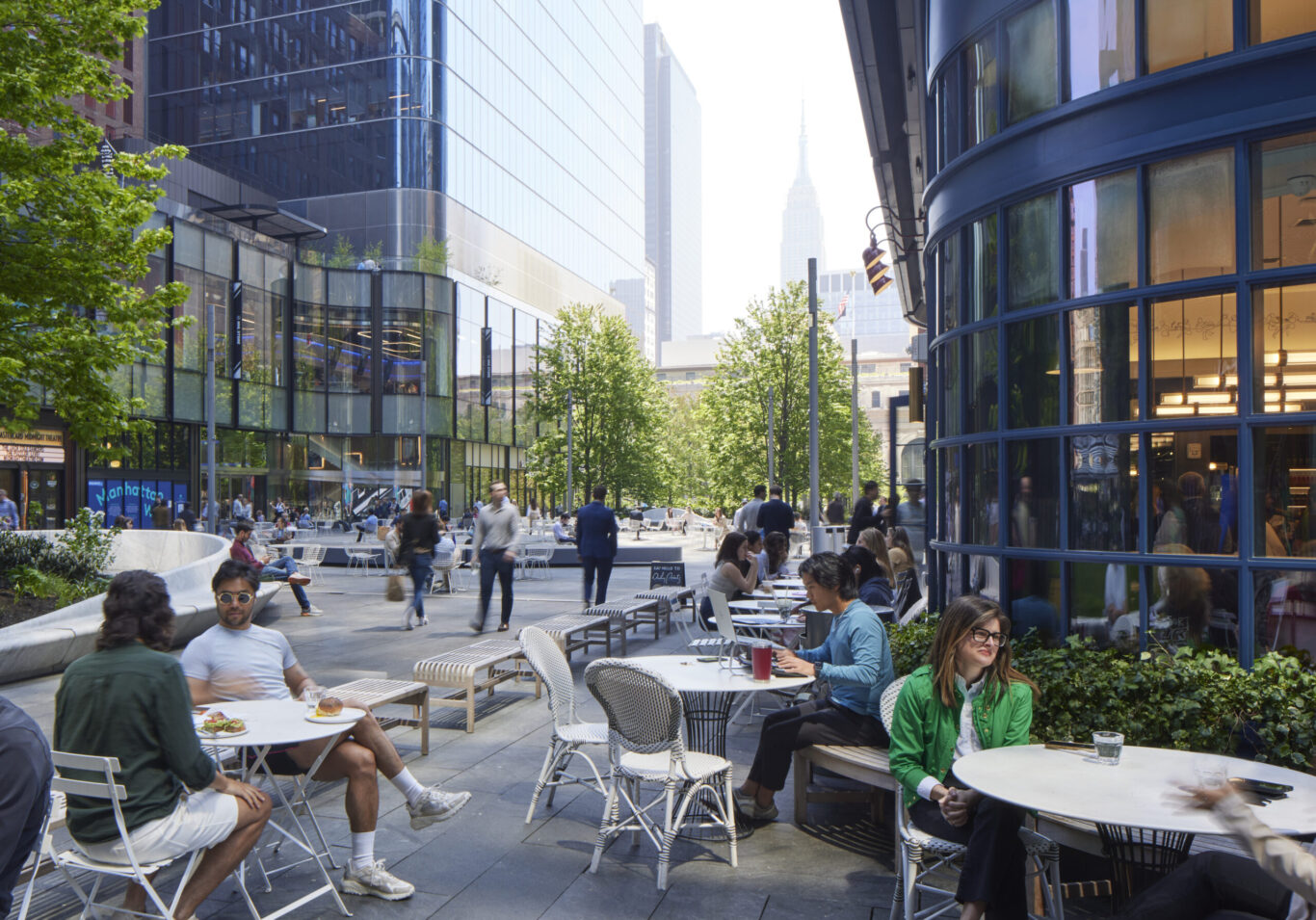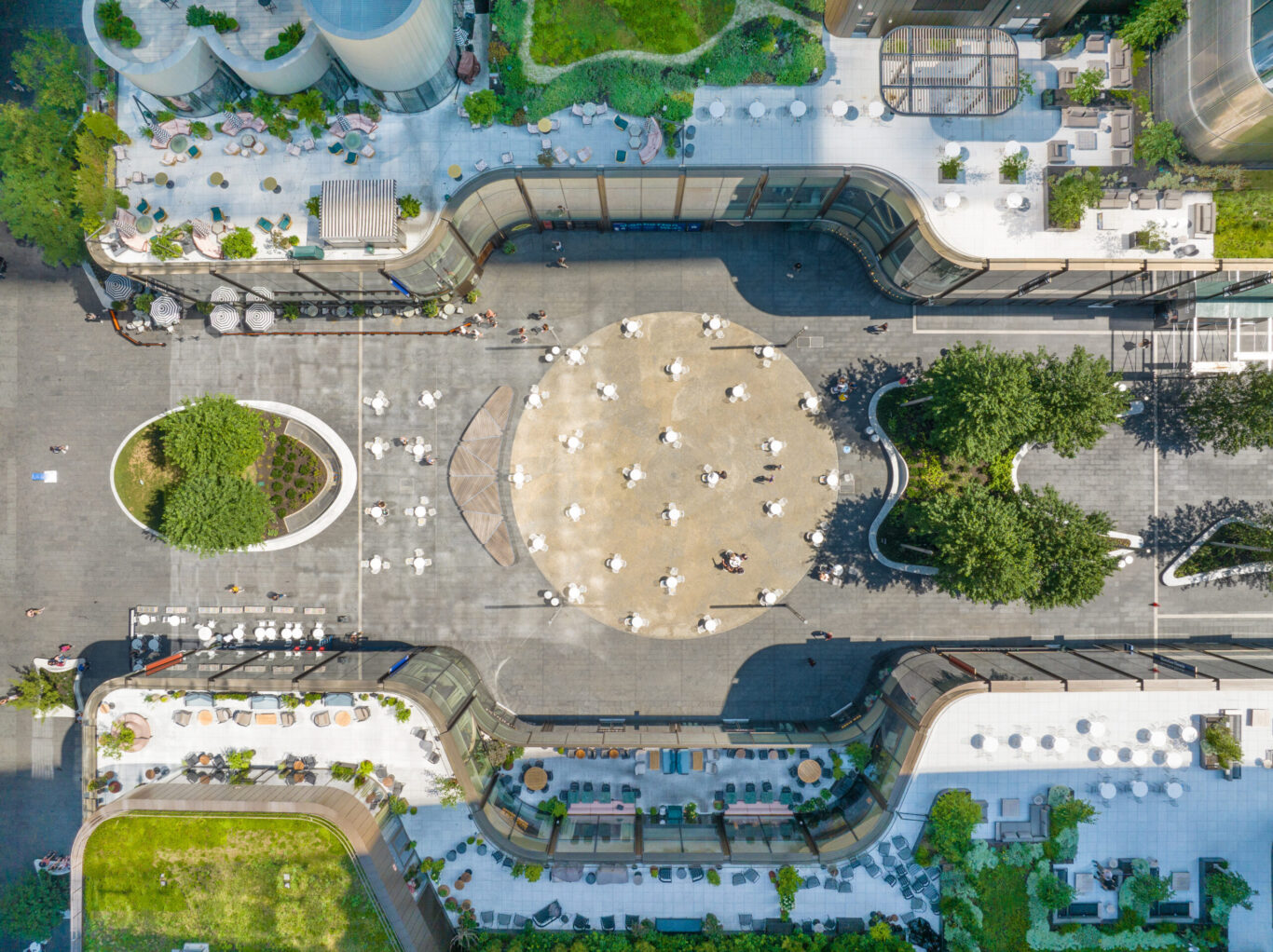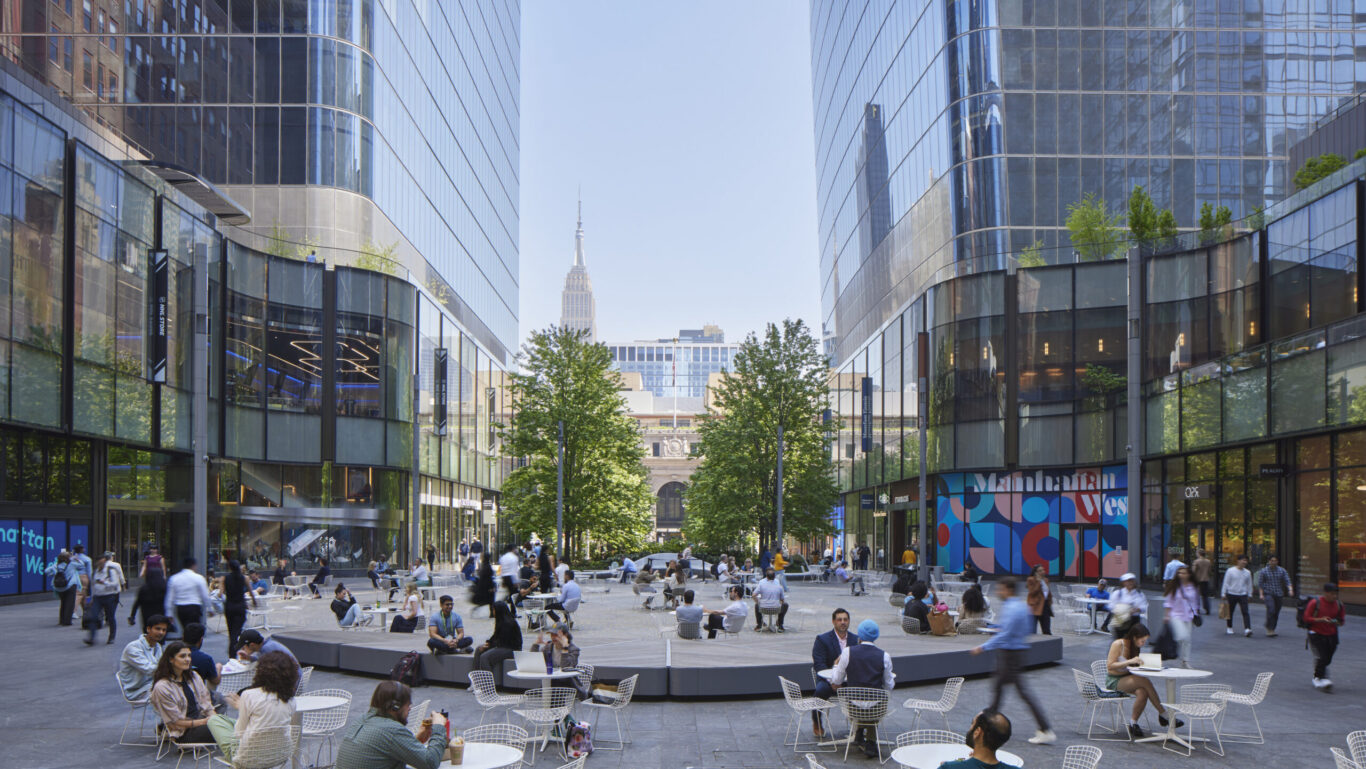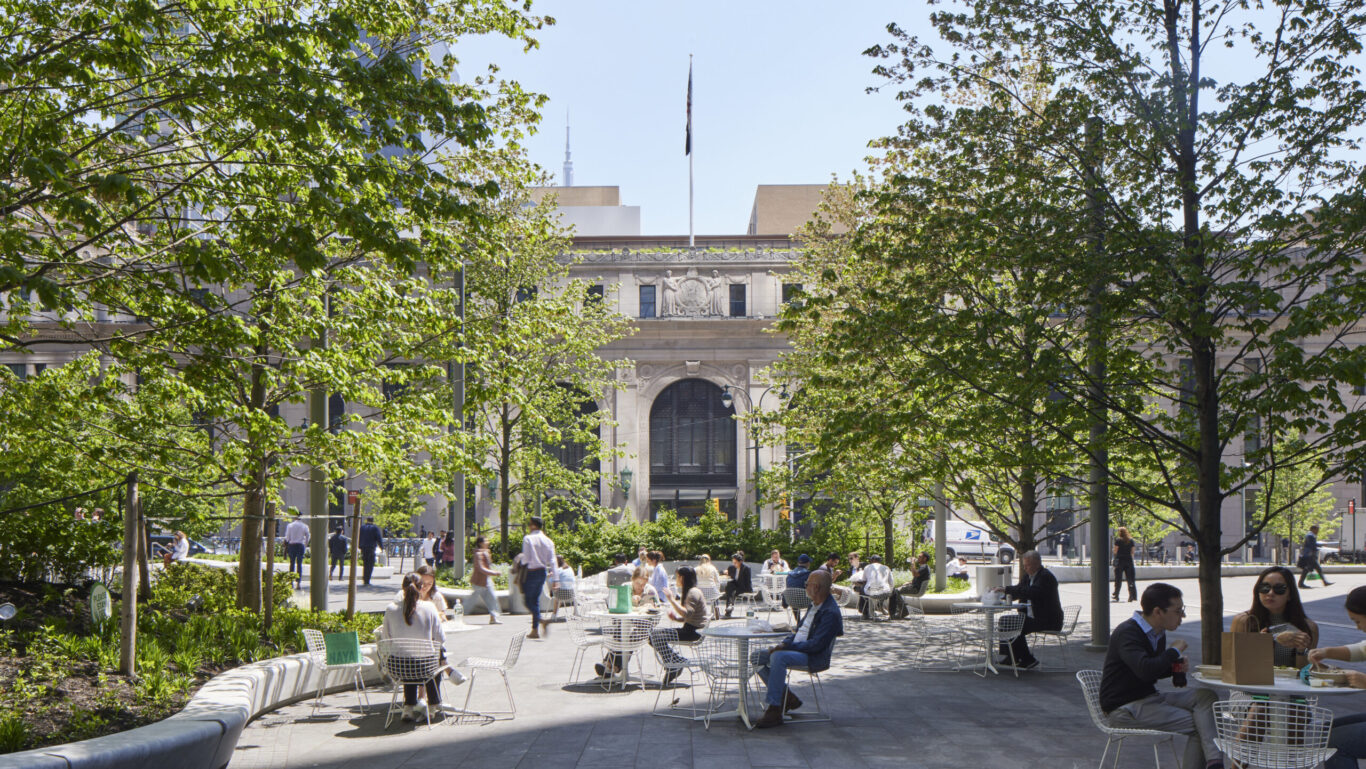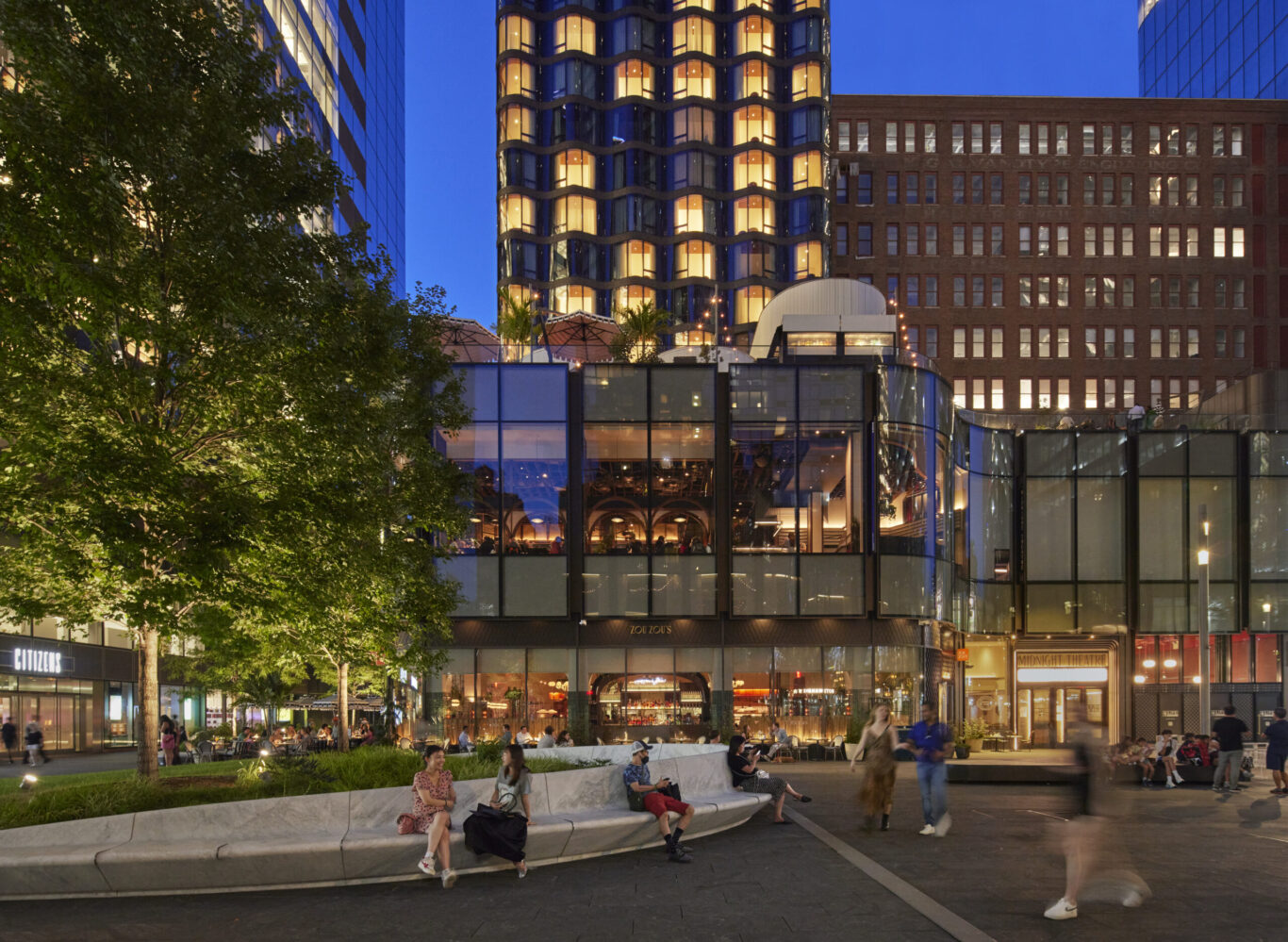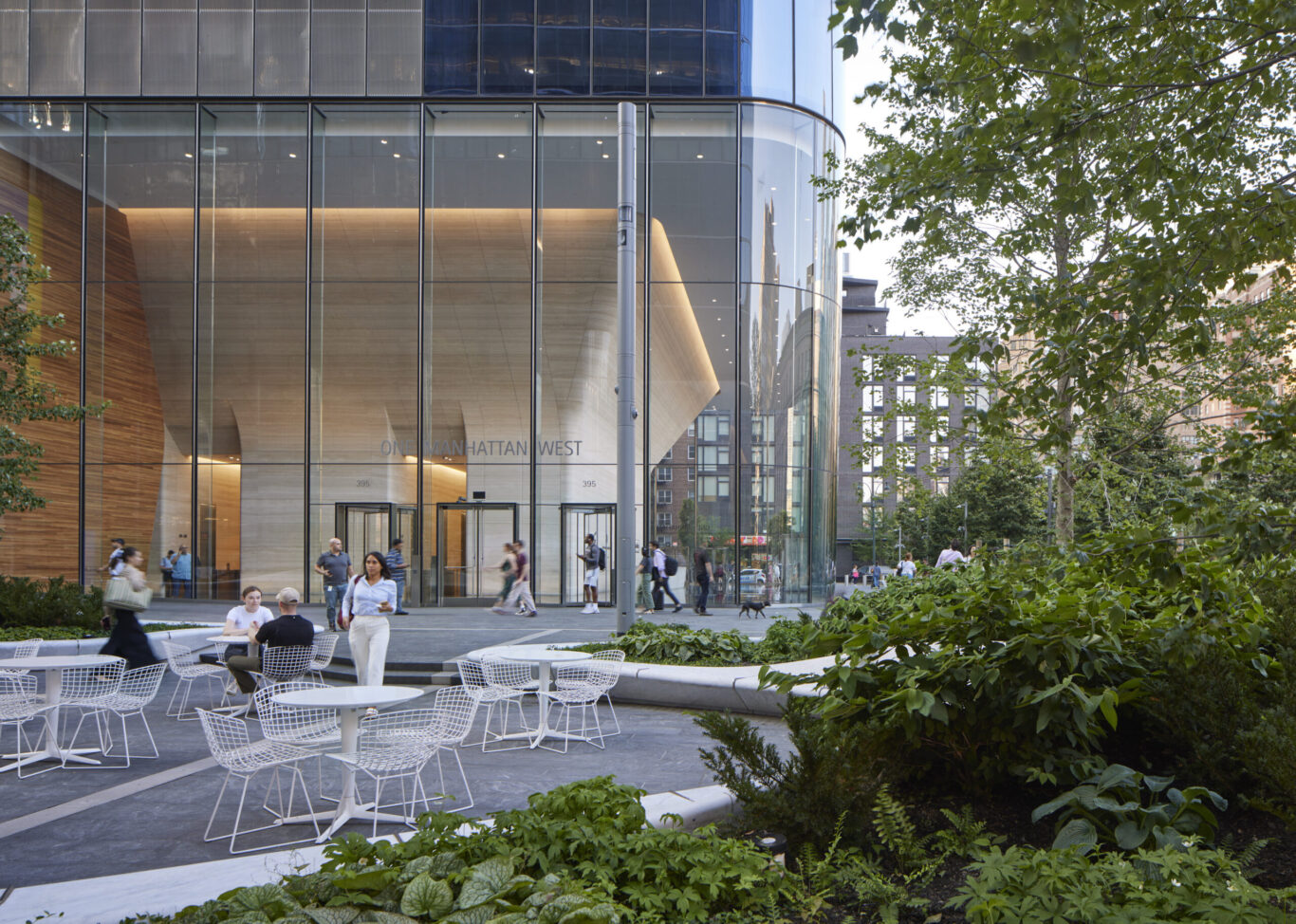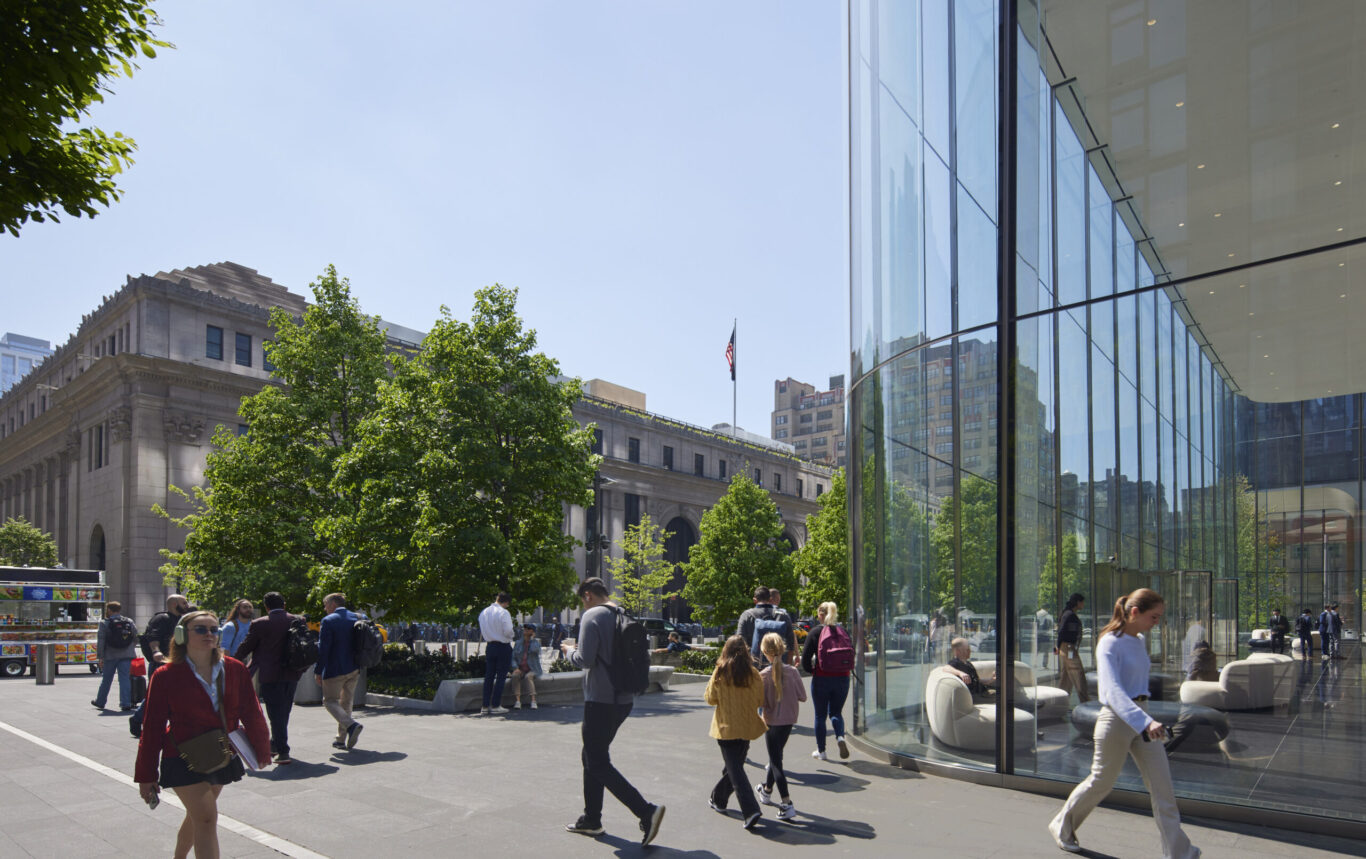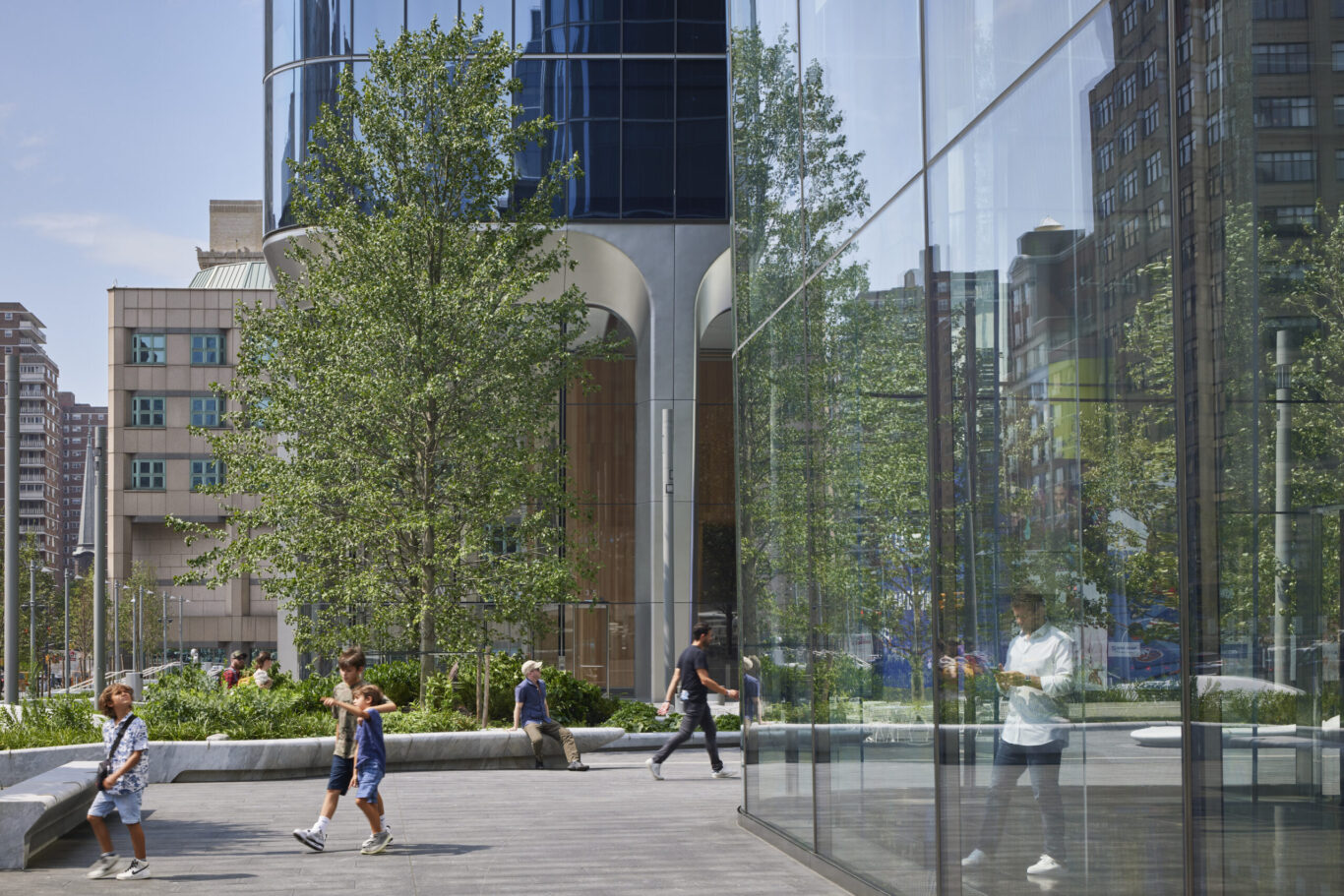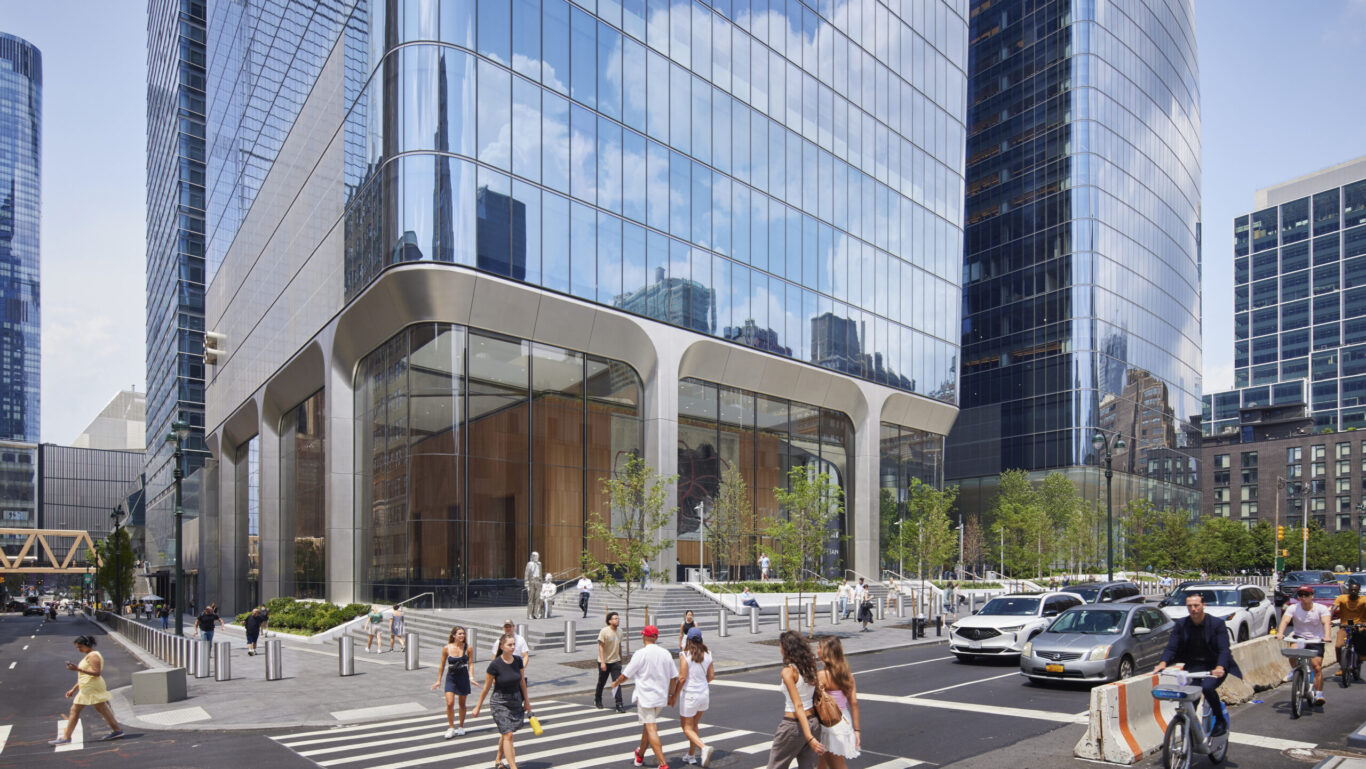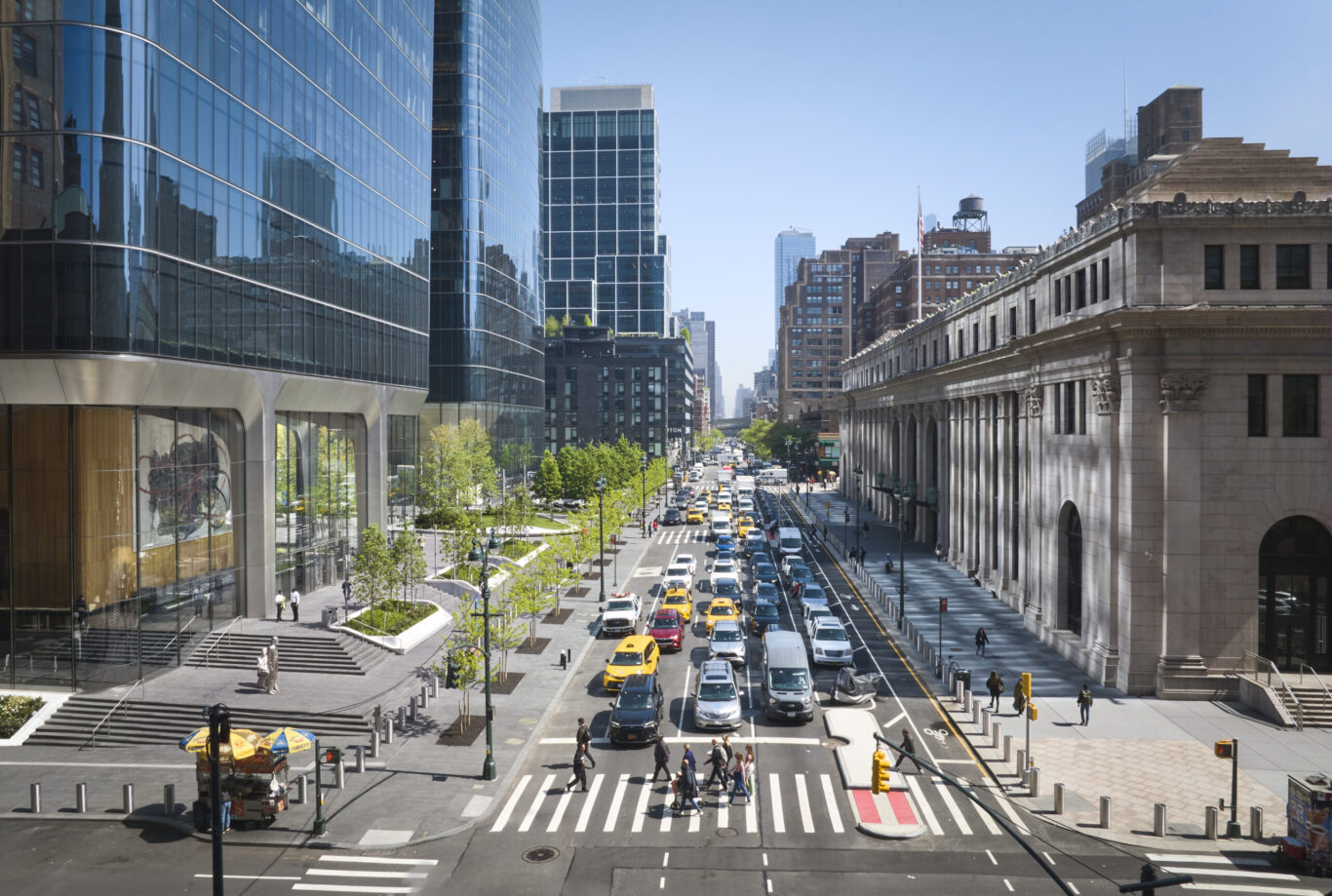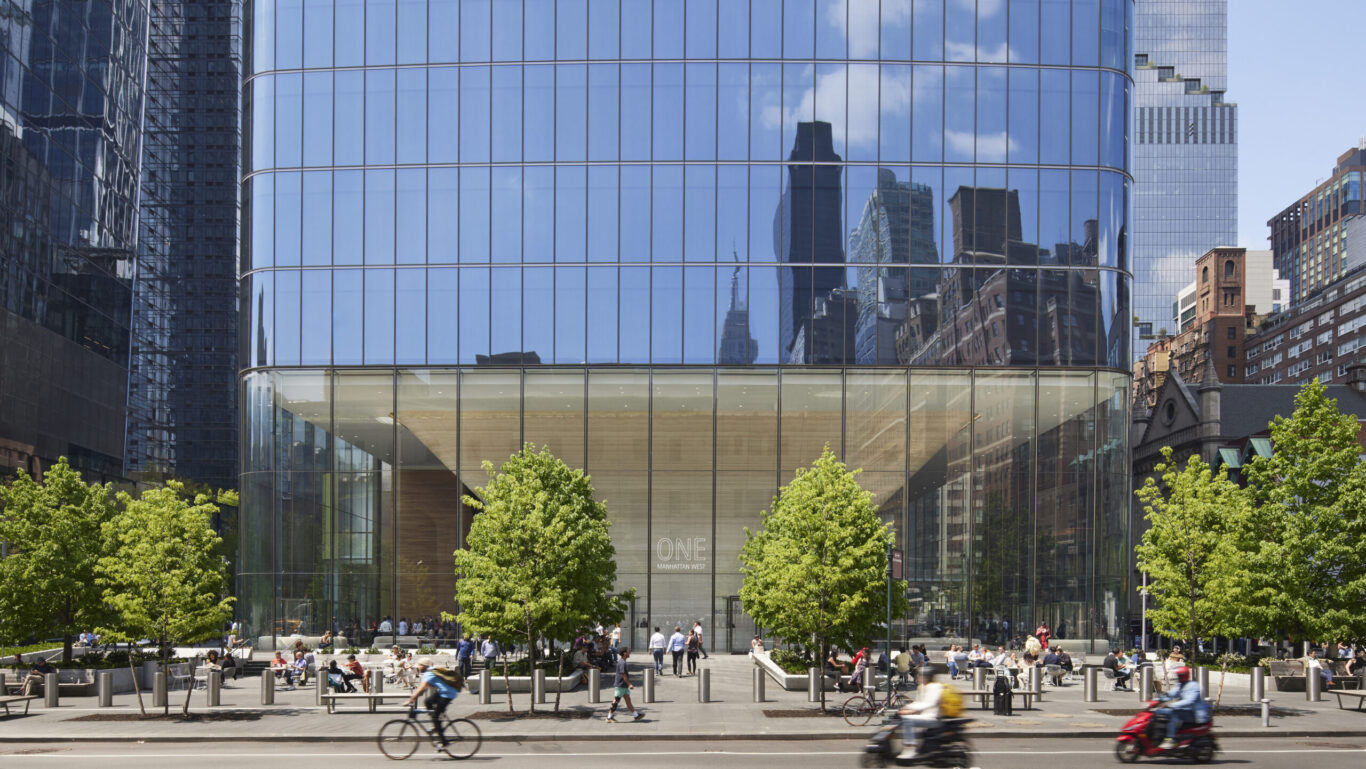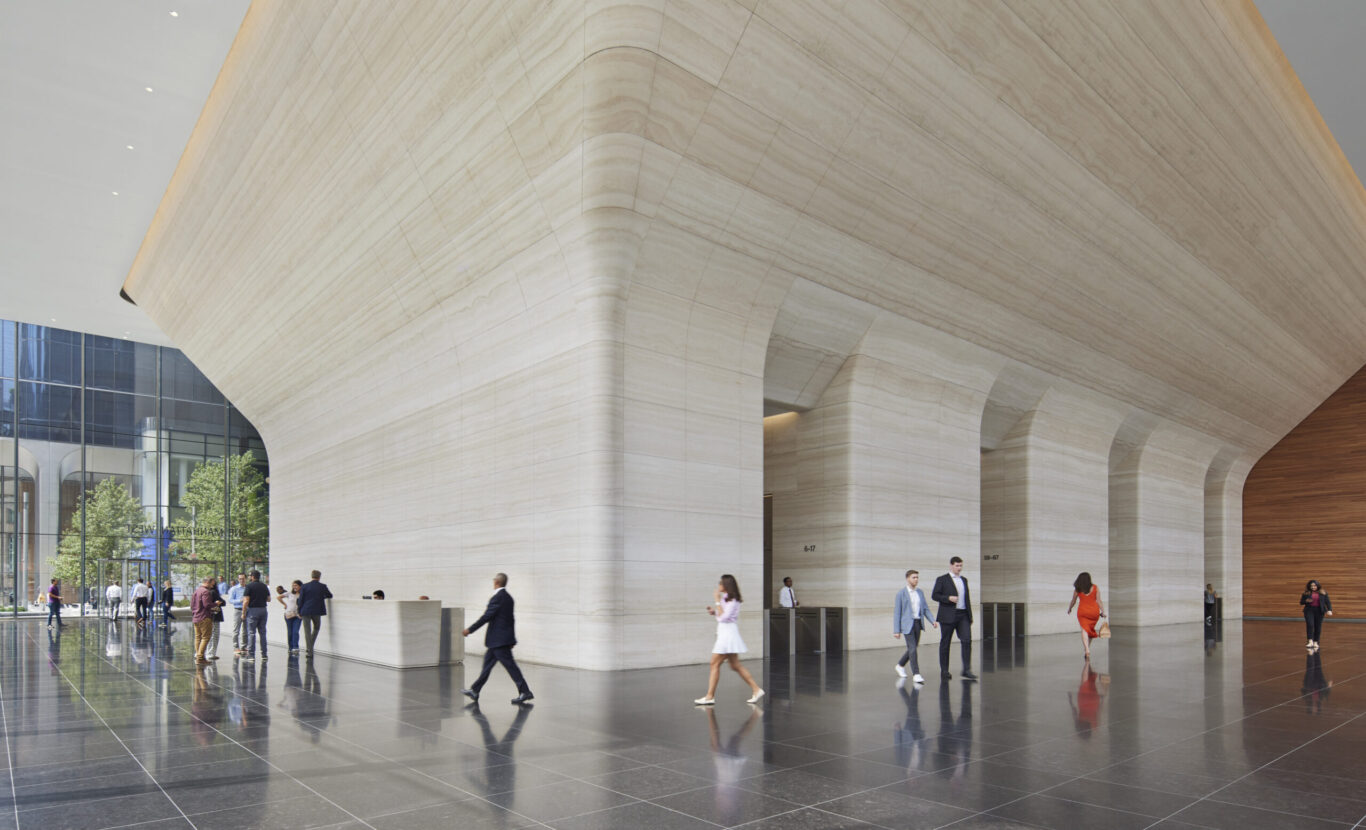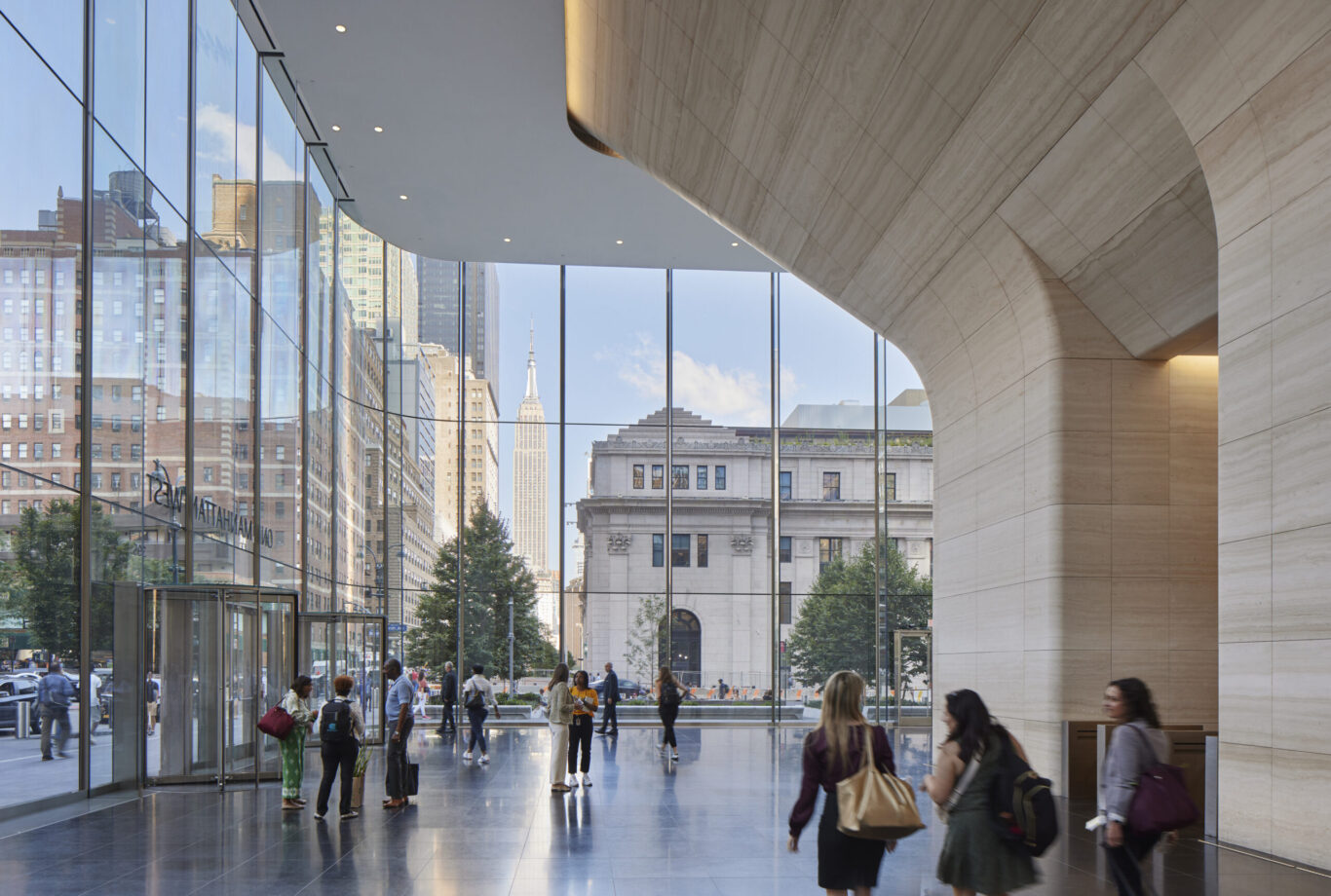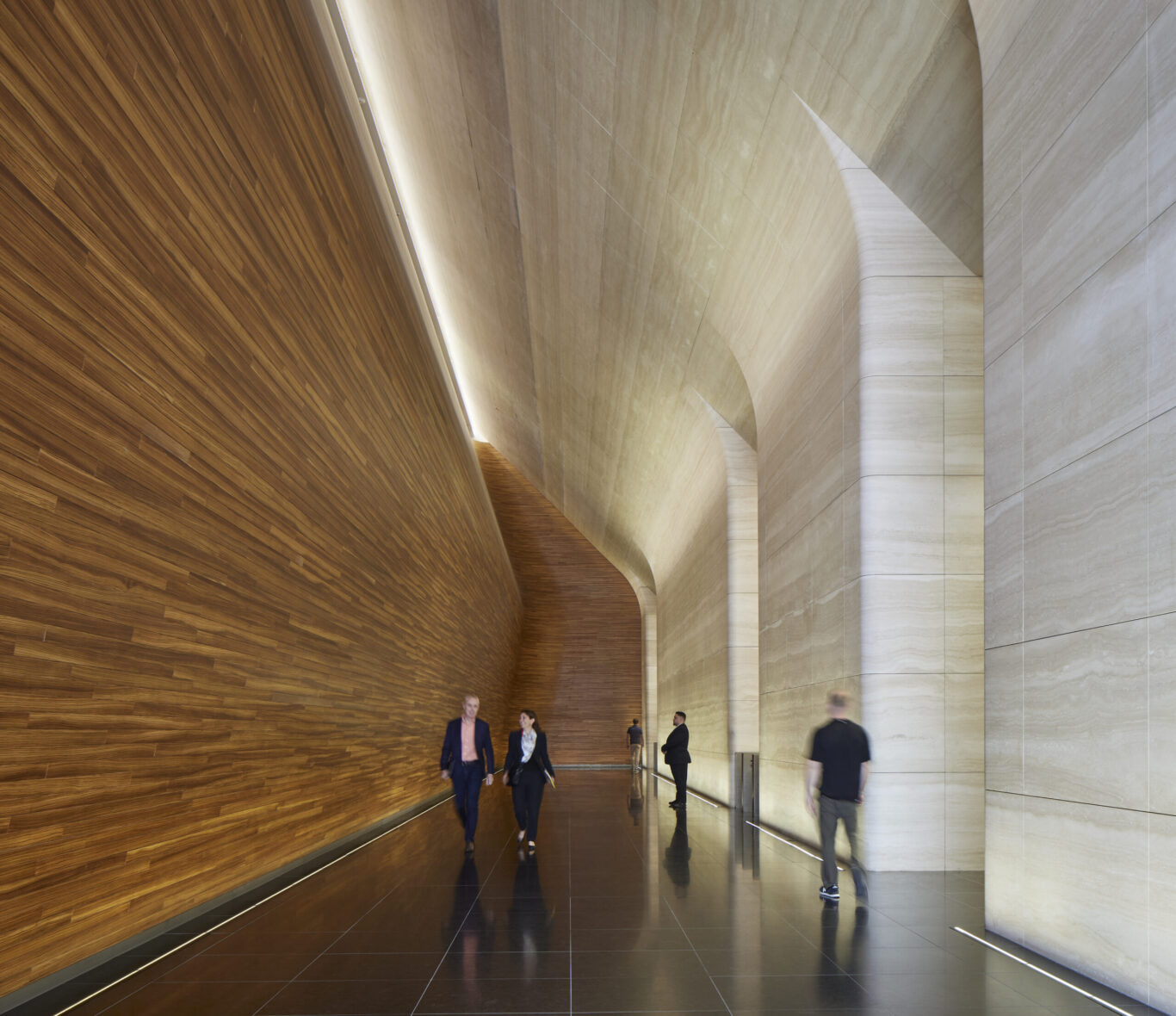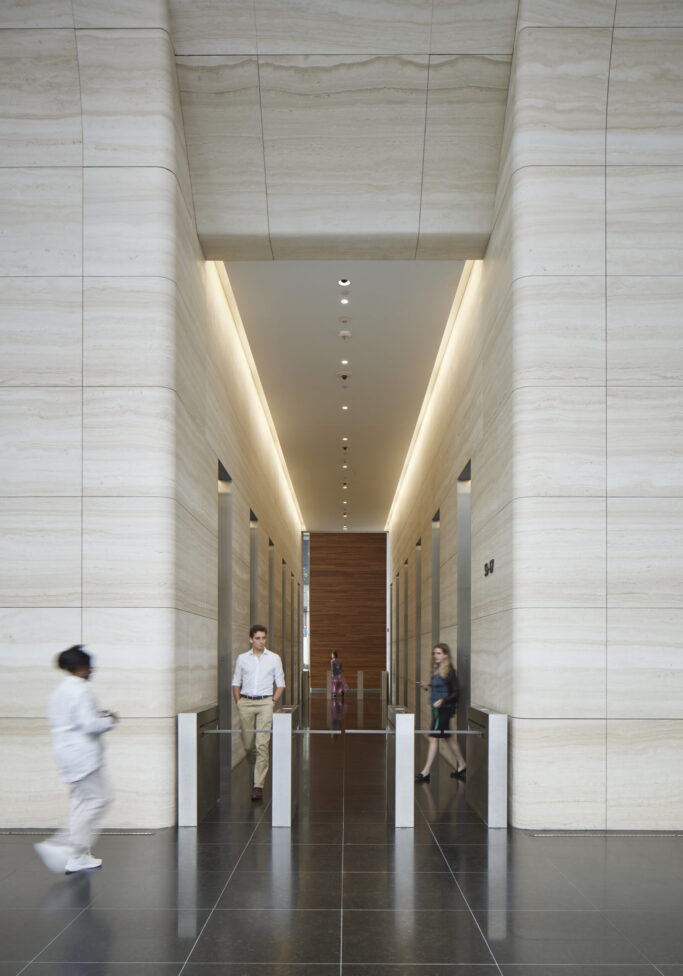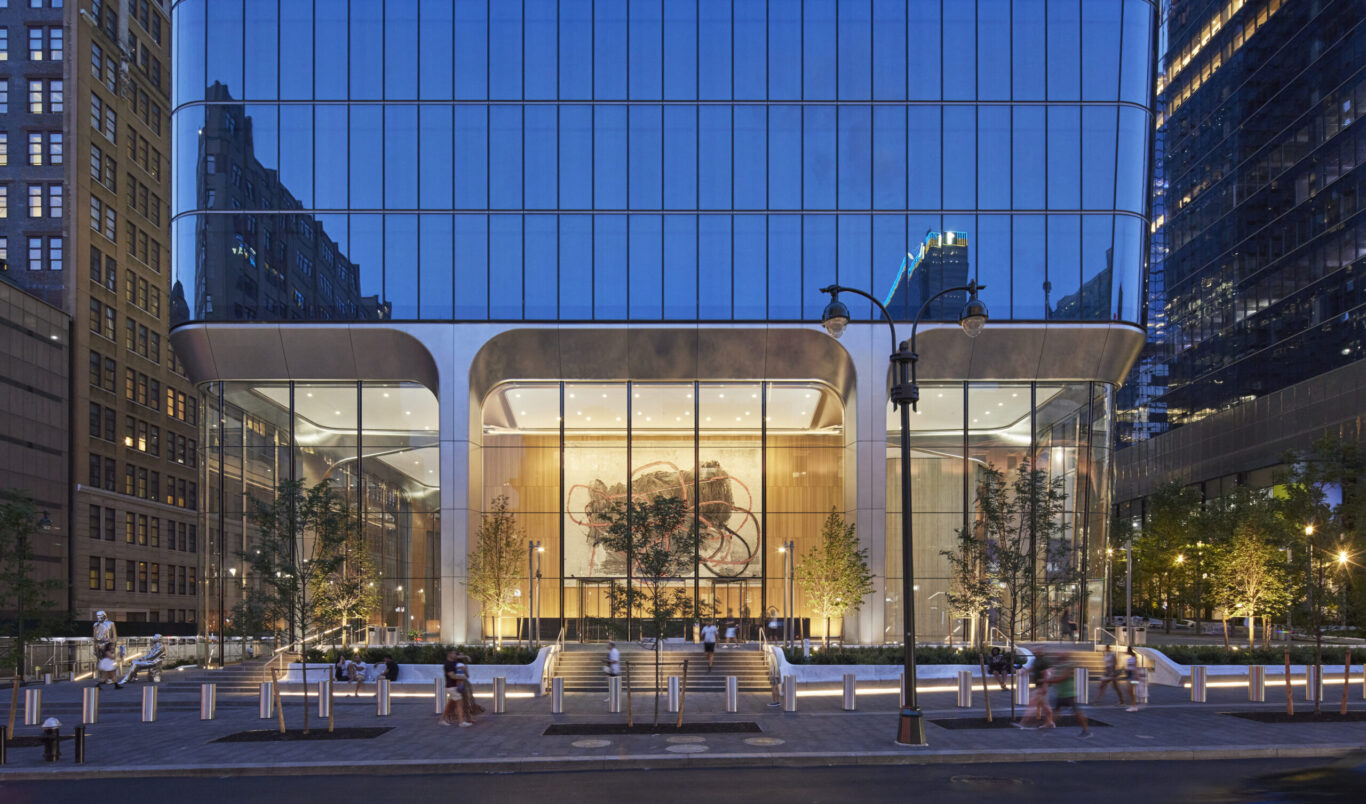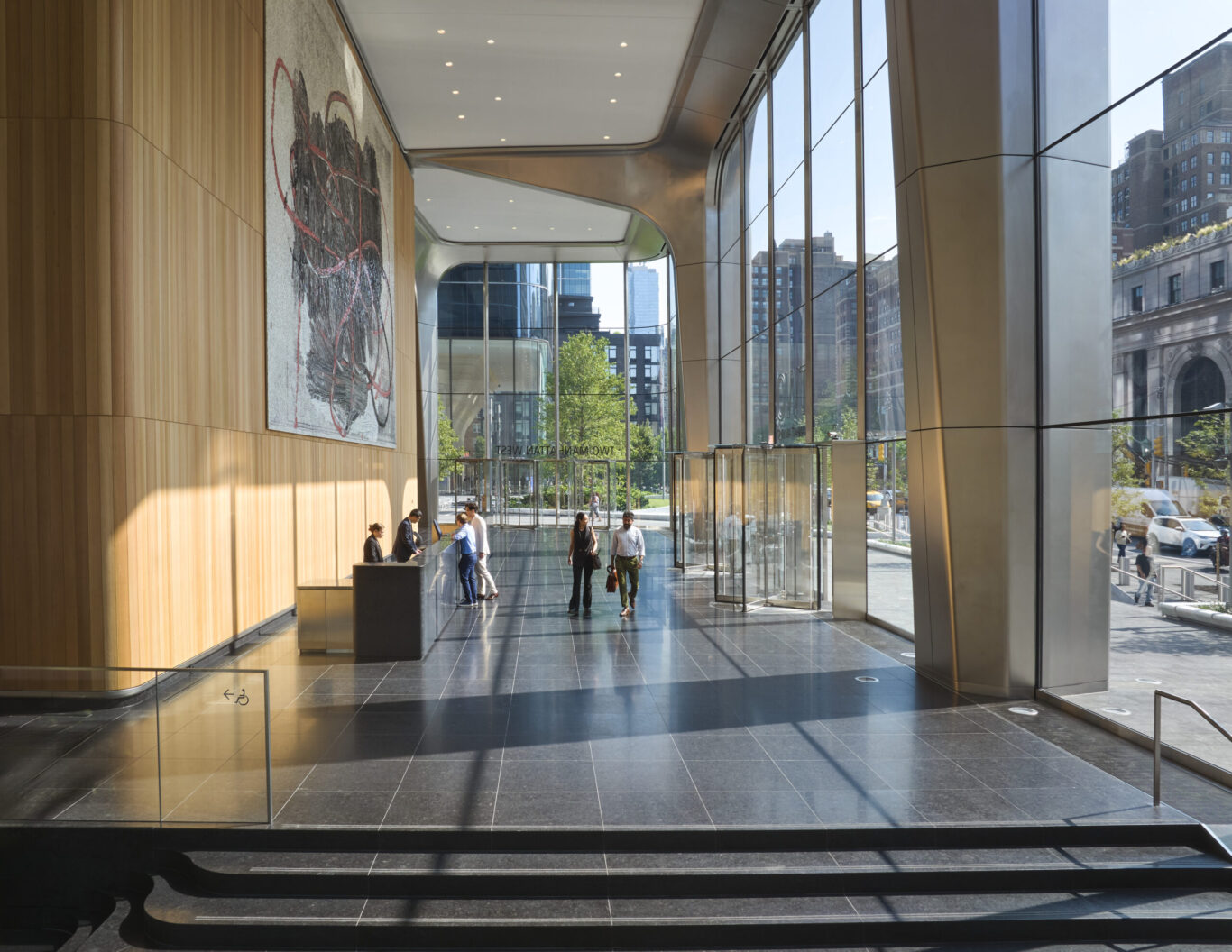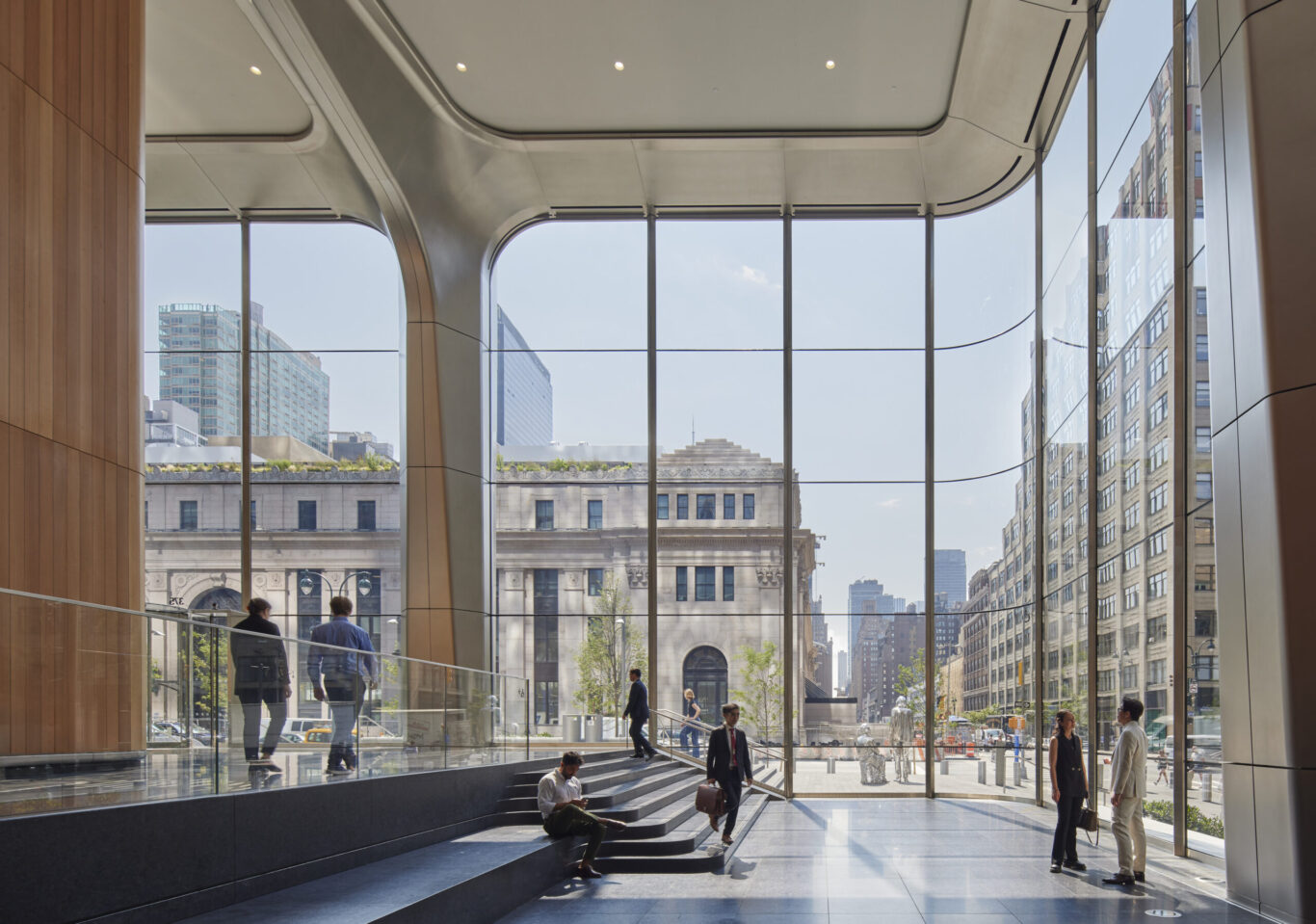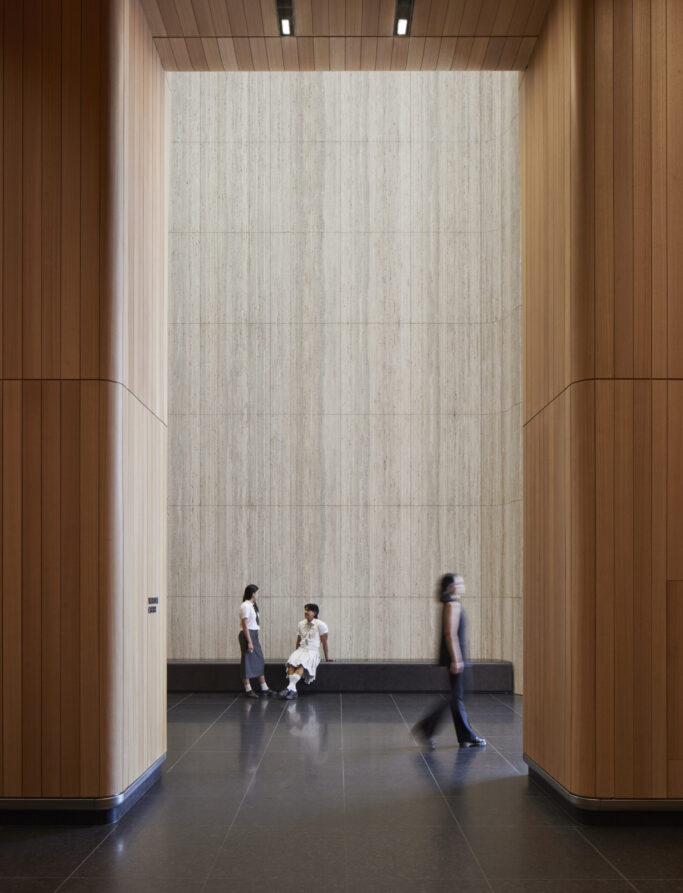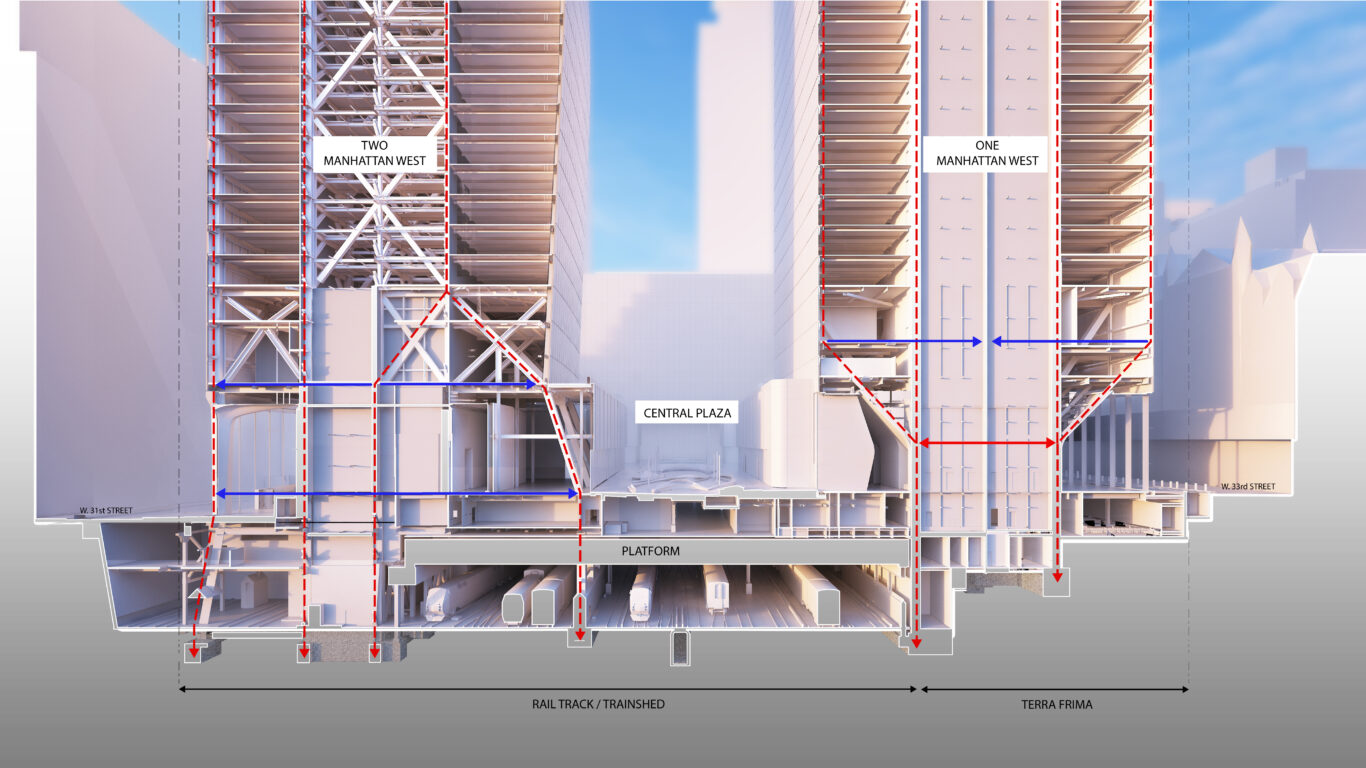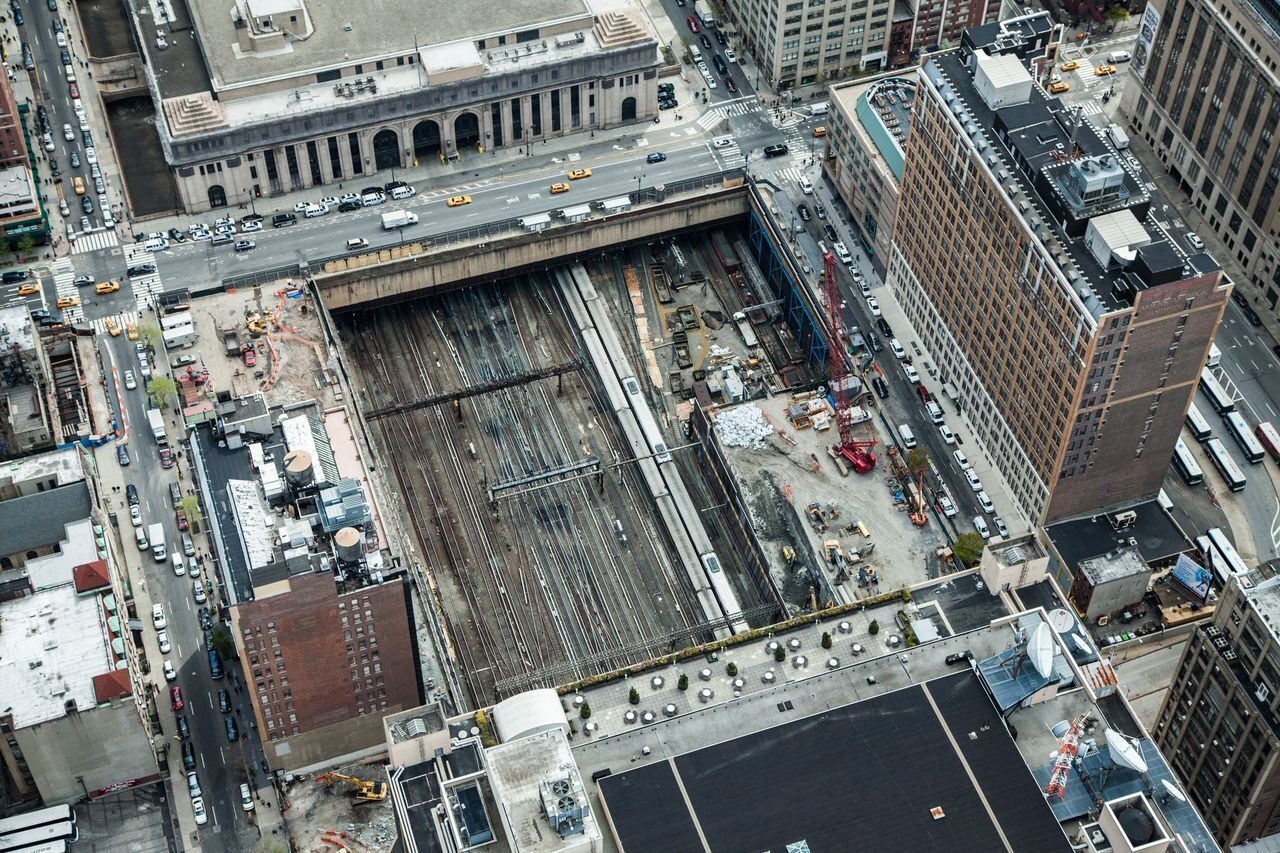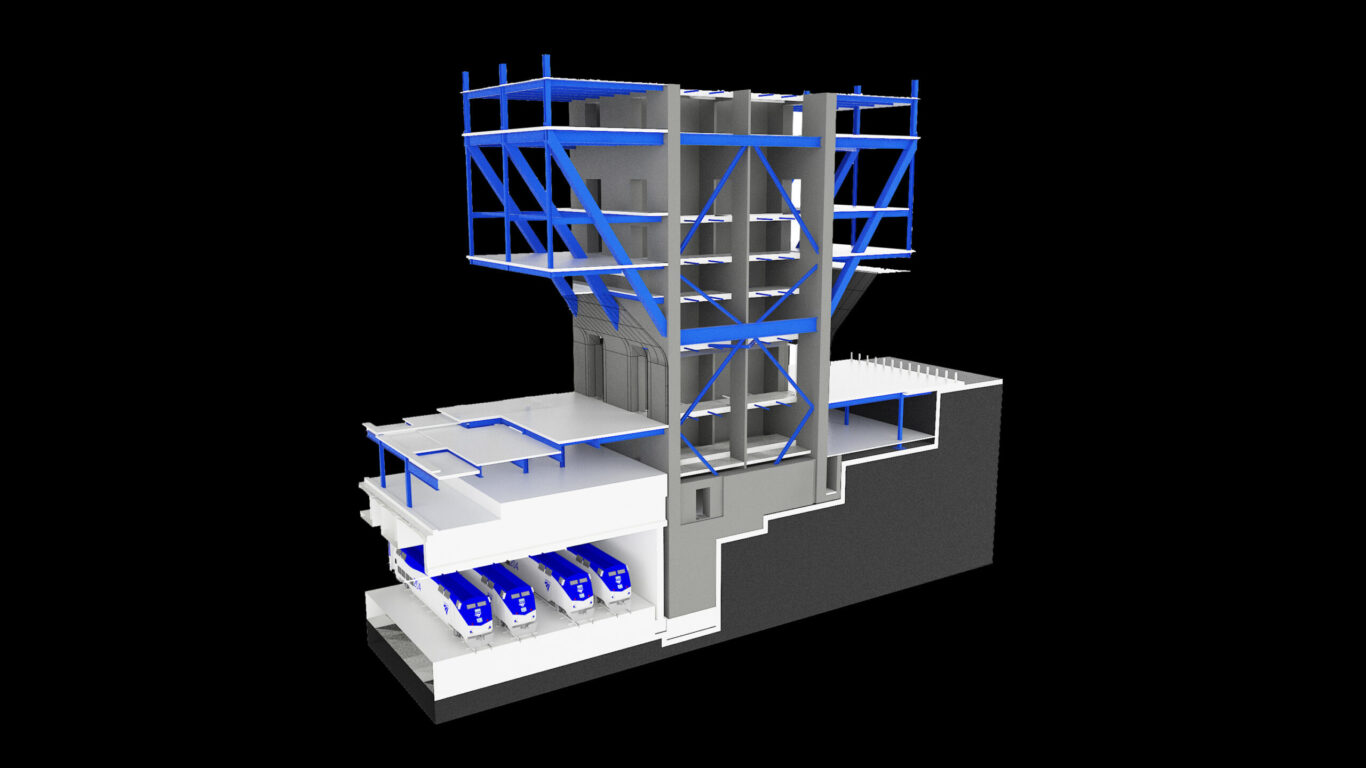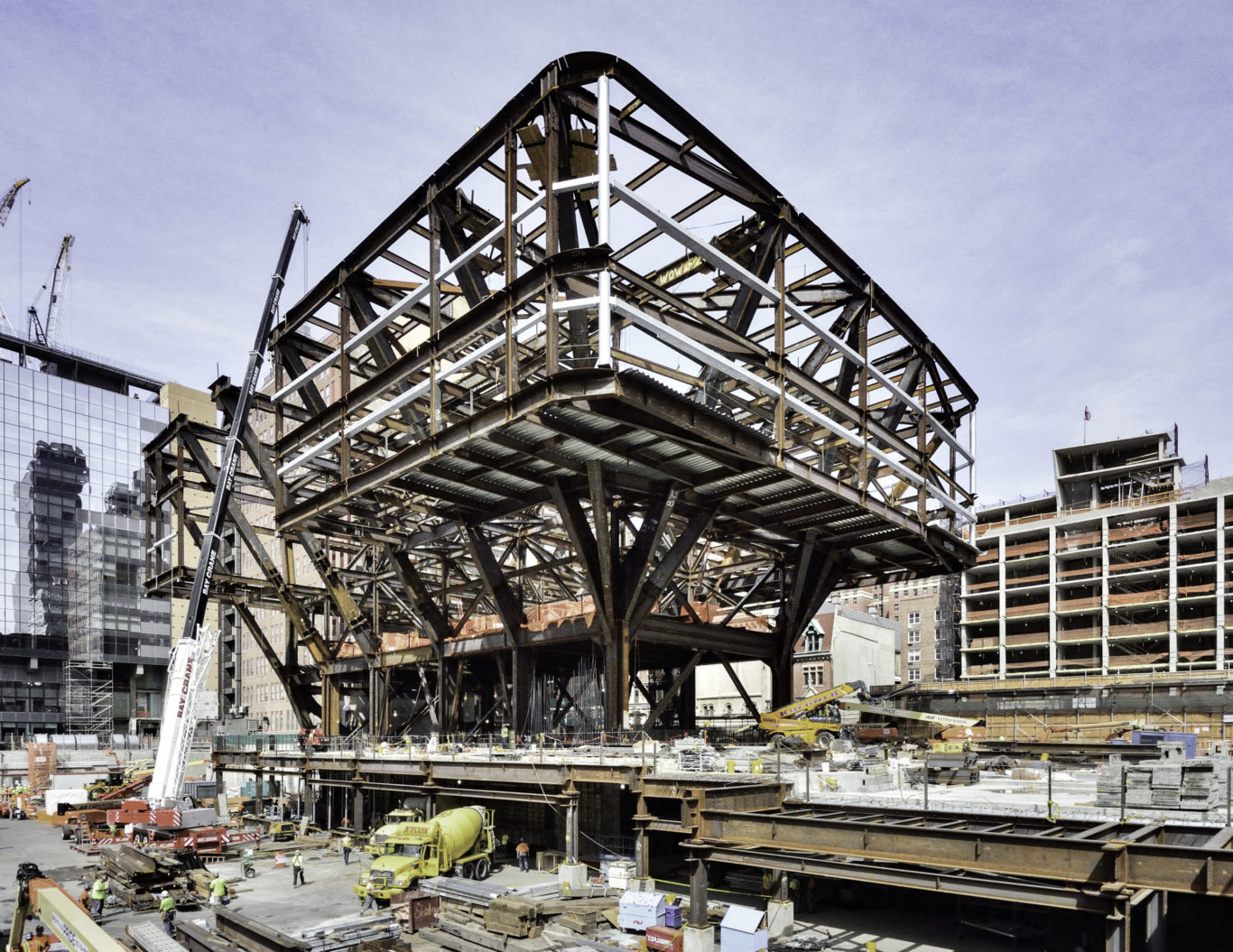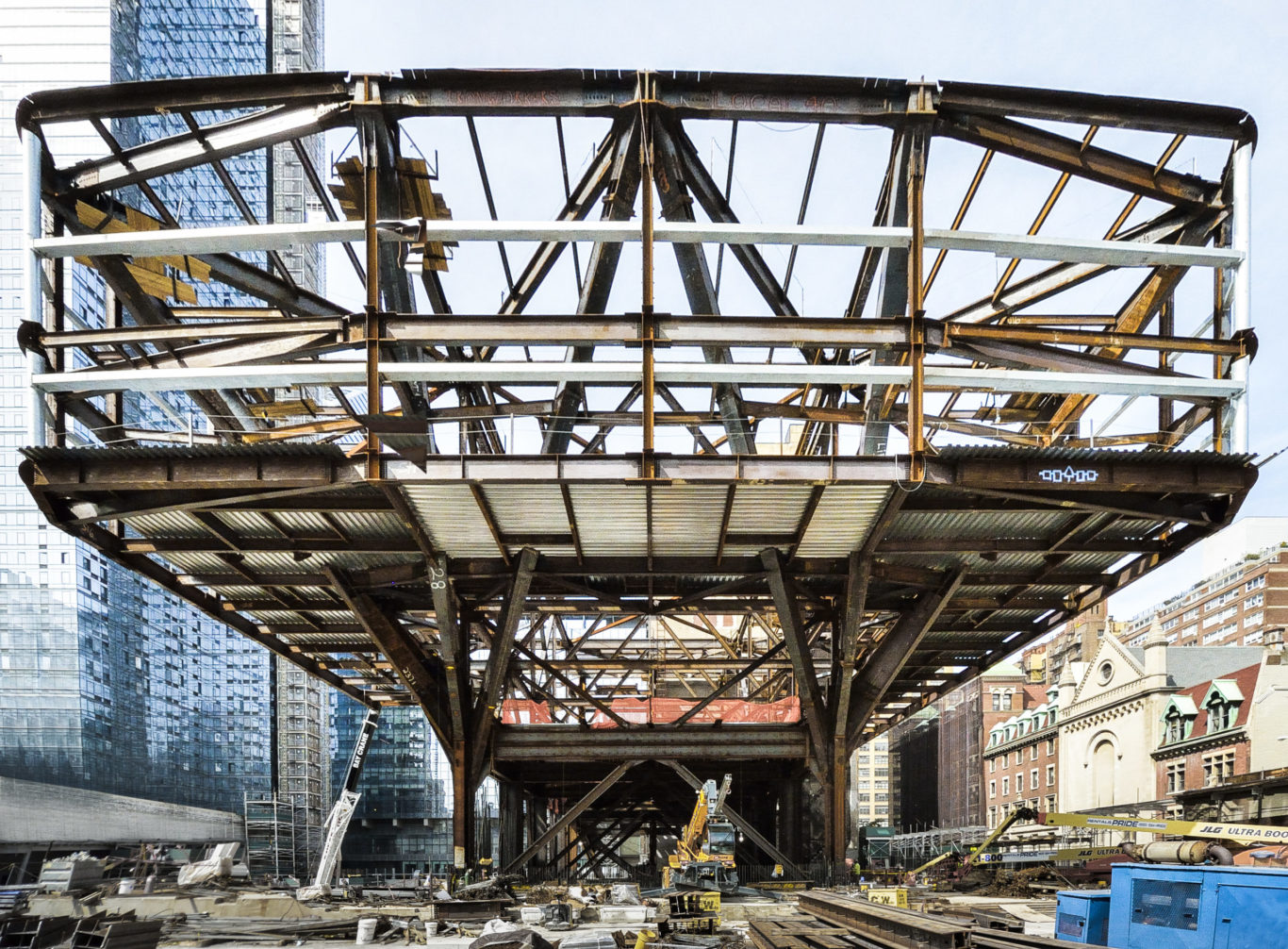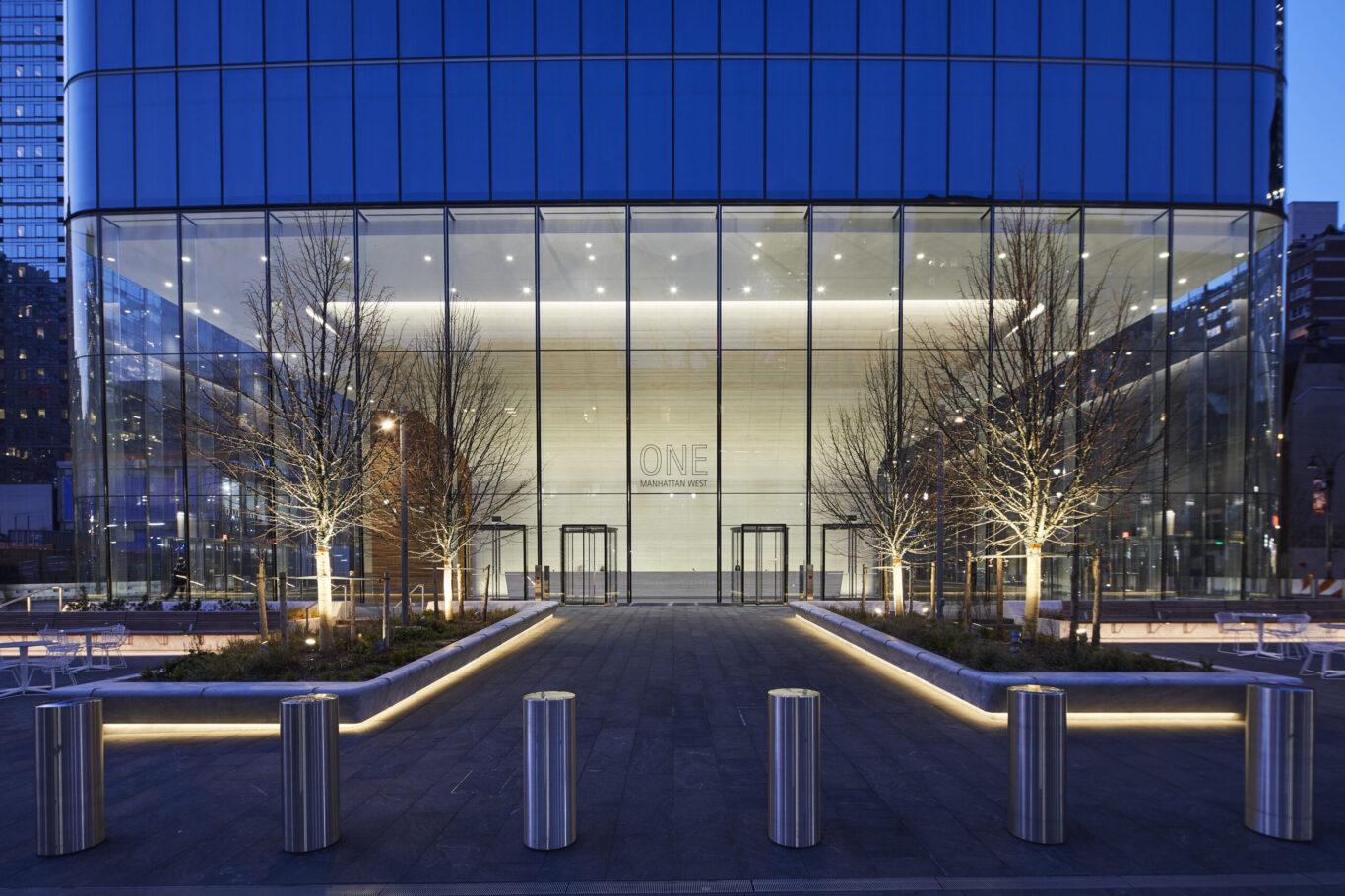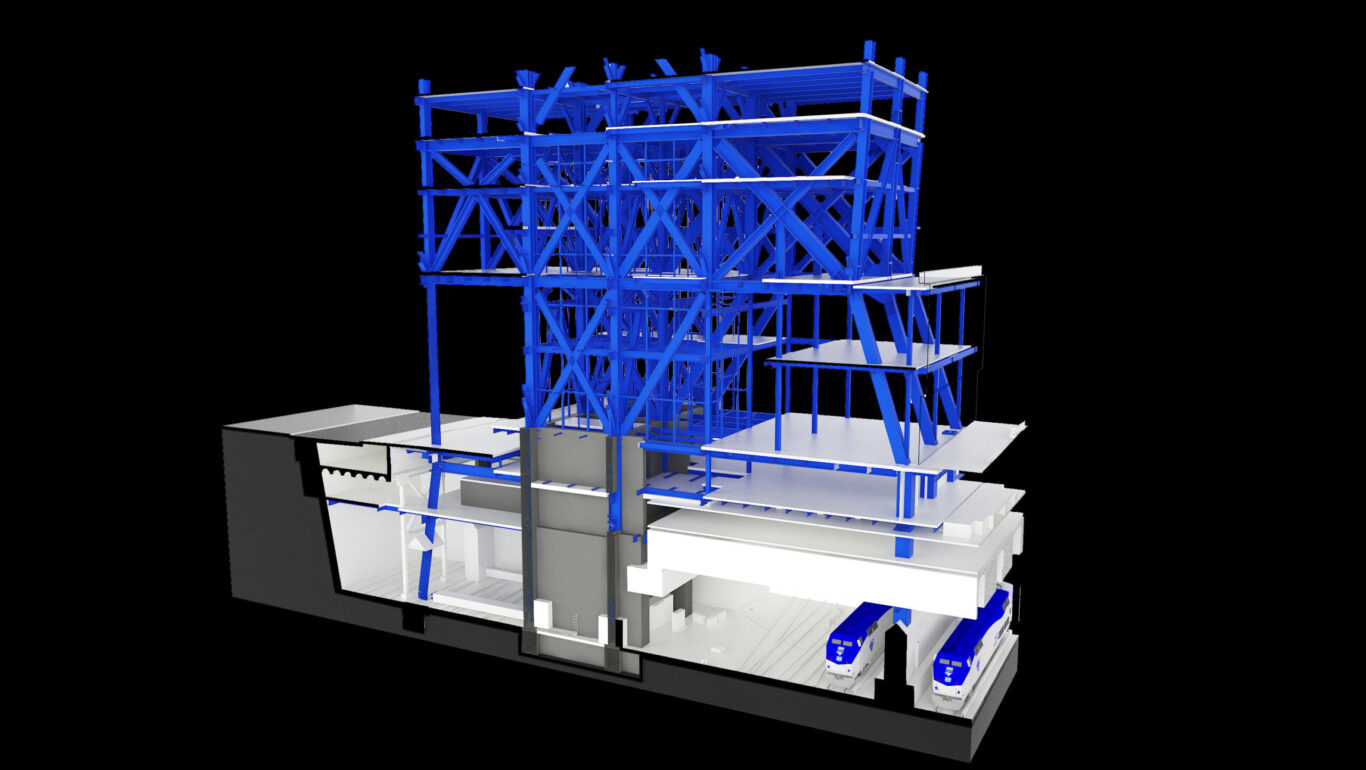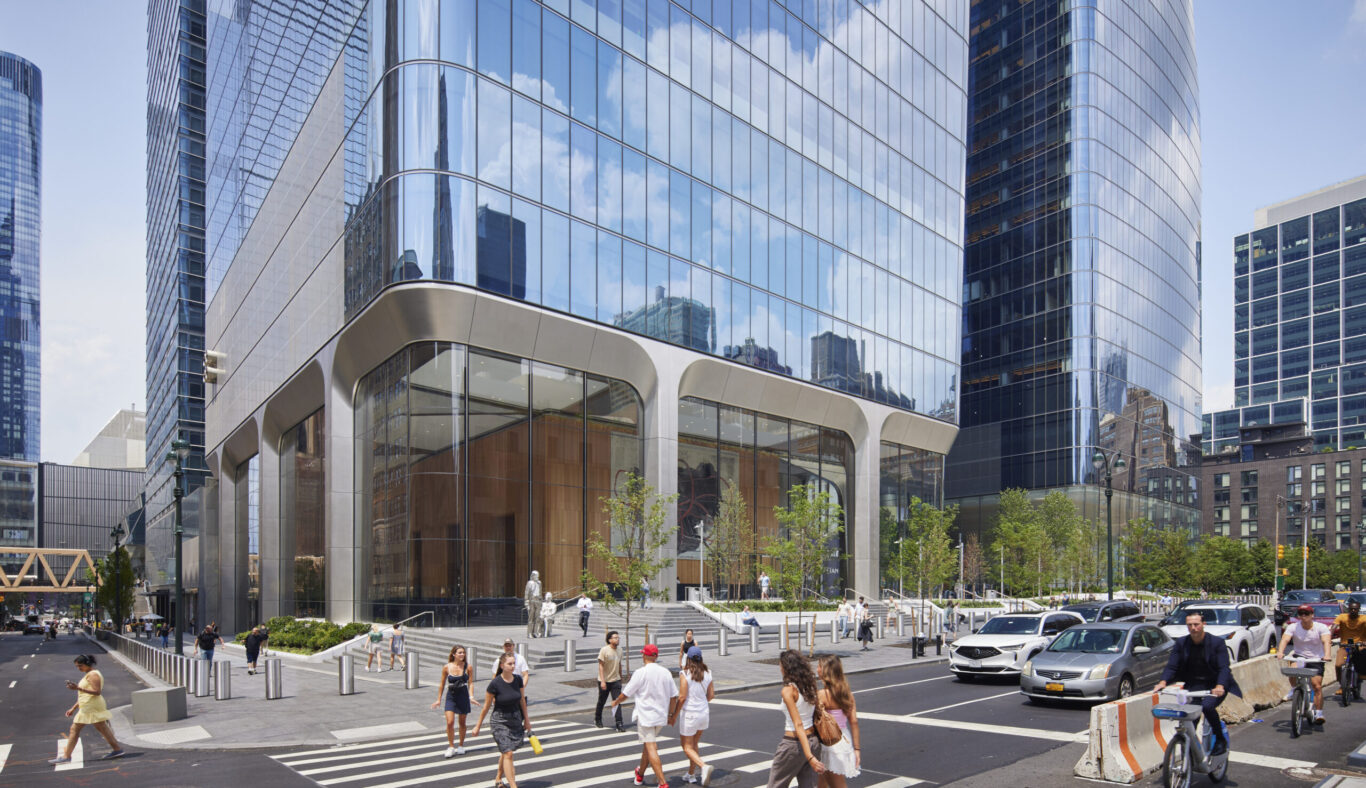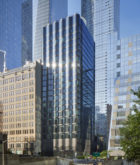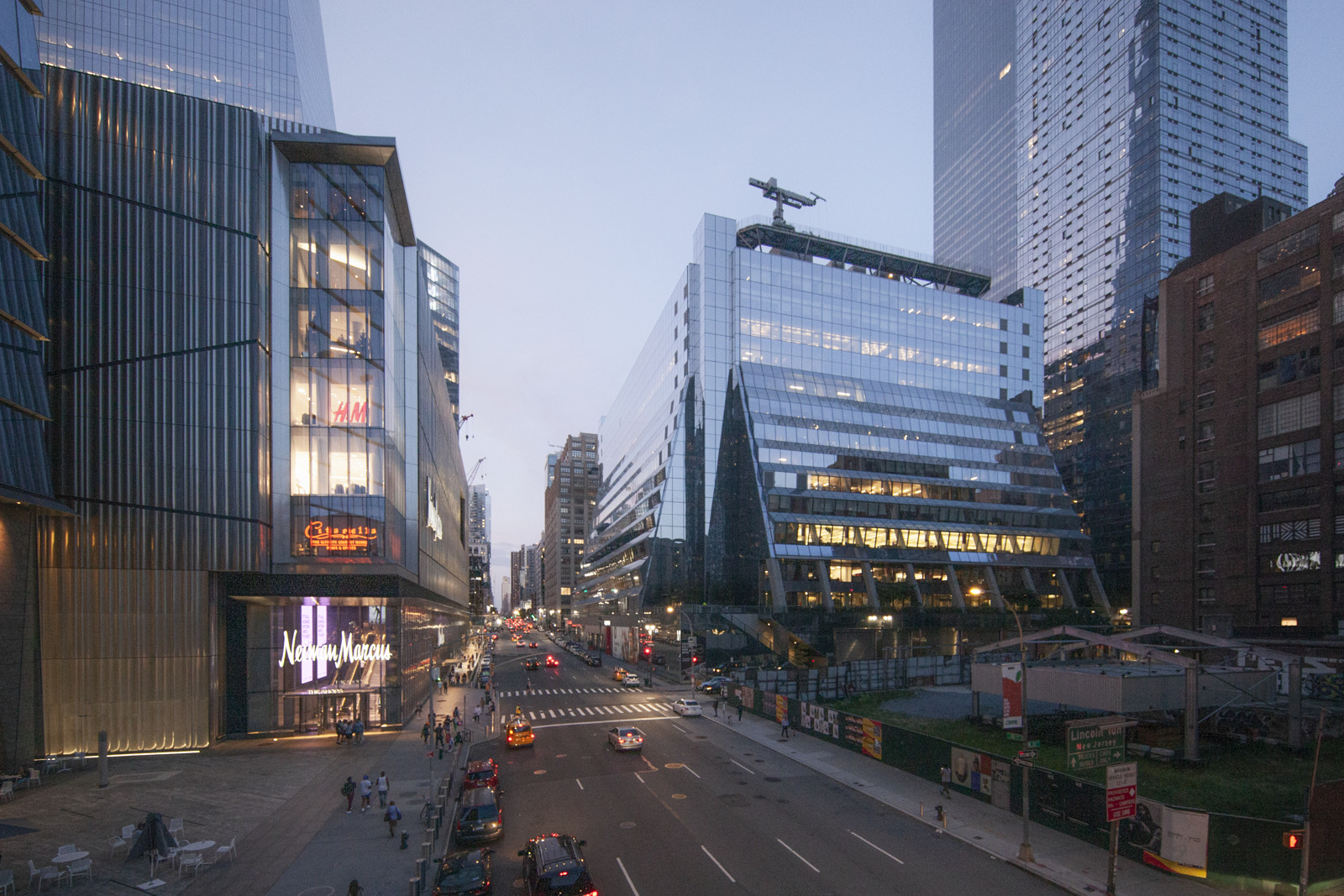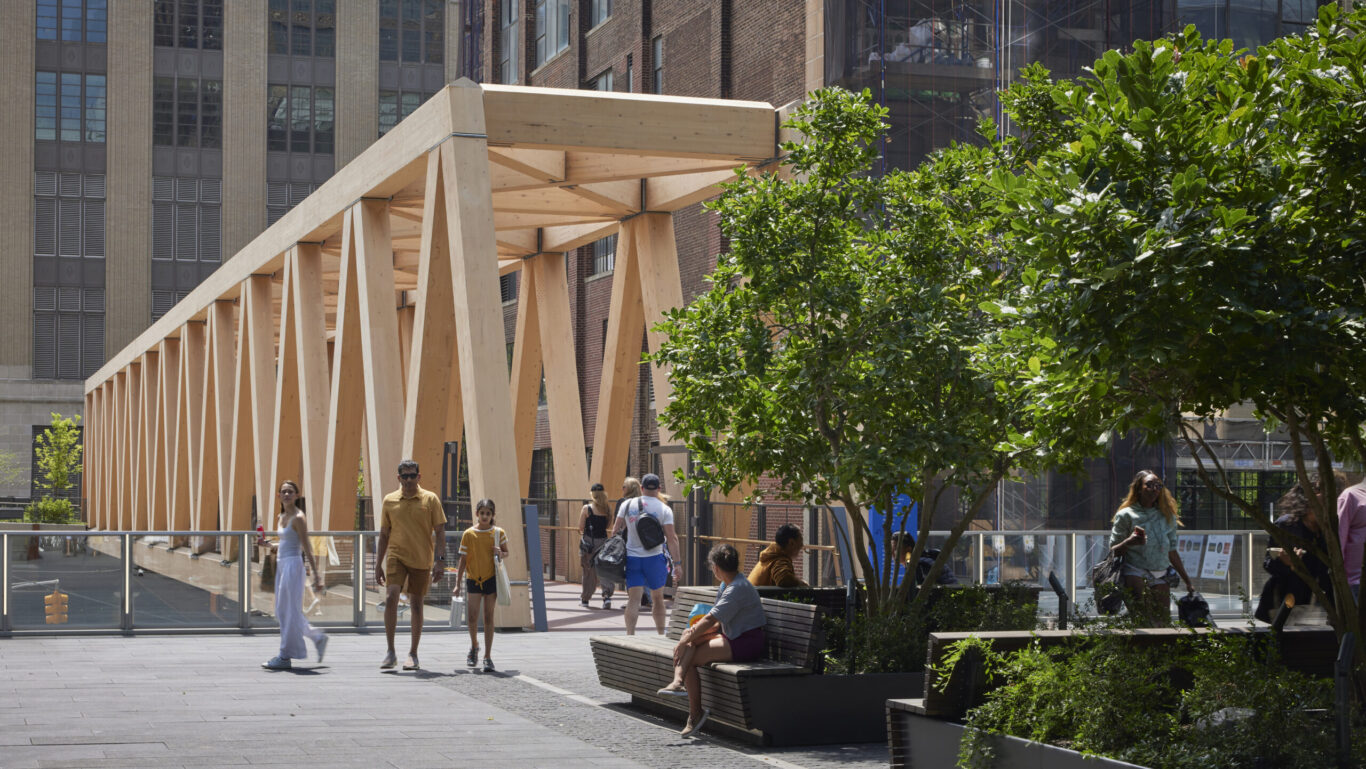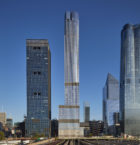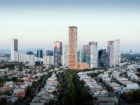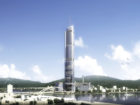Unlocking the potential of a complex site
Manhattan West is one of the largest and most complex developments in recent history in New York City. The project, bound by Ninth and Tenth Avenues and West 31st and West 33rd Streets, is built almost entirely above railroad tracks leading to Moynihan Train Hall and Pennsylvania Station. It’s become a key component of the larger revitalization of Manhattan’s rapidly changing Far West Side. With a master plan and four of its six buildings designed and engineered by SOM, the project is an exemplar of what an integrated firm can accomplish.

Public space is at the heart of the master plan. The buildings are organized around a series of distinct plazas, enabled by the engineering of a 2.6-acre platform that covers the rail tracks. The development’s central plaza is lined with a combined 225,000 square feet of retail. From Ninth Avenue, the public space forms a series of urban corridors along West 31st and West 33rd Streets, and the central plaza picks up where West 32nd Street—which terminates at Penn Station on Seventh Avenue—leaves off.
Together, these urban connections create a gateway between Hudson Yards to the west and Penn Station to the east. It also completes the major reactivation of the streetscape on Manhattan’s Far West Side—a revitalization in which SOM has played an integral role, from the concourse improvements at Penn Station to the transformation of the James A. Farley Post Office Building into Moynihan Train Hall.
